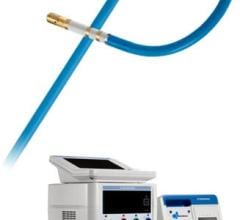August, 3, 2007 - In patients with arrhythmogenic right ventricular dysplasia/cardiomyopathy (ARVD/C), there is a high rate of recurrence following radiofrequency (RF) catheter ablation following electrophysiologic mapping, researchers report in the July 31st issue of the Journal of the American College of Cardiology.
"This study demonstrates that ventricular tachycardia in the setting of ARVD/C cannot be cured with RF catheter ablation," senior investigator Dr. Hugh Calkins told Reuters Health.
"These findings," he added, "also call into question the early use of RF ablation to treat ventricular tachycardia in this setting."
Dr. Calkins of the Johns Hopkins University School of Medicine in Baltimore and his colleagues note that previous studies of RF ablation for this inherited cardiomyopathy have yielded conflicting results.
To investigate further, the researchers followed 32 patients who had undergone at least one RF ablation procedure for ventricular tachycardia. In total, 48 procedures were performed. Of these, conventional mapping had been used for 38 procedures and the remaining ten employed three-dimensional electroanatomical mapping.
Seventy-seven per cent of the procedures resulted in ablation of ventricular tachycardias; these could not be re-induced with programmed electrical stimulation. However, clinical ventricular tachycardia was inducible in the other 23 per cent.
Overall, the researchers considered 46 per cent of the procedures to be successful, 31 per cent to be partially successful and 23 per cent of them to have failed. There was one procedure-related death.
The cumulative ventricular tachycardia recurrence-free survival rate was 75 per cent at six weeks, but this dropped to 25 per cent after 14 months. Cumulative recurrence-free survival had no significant association with the success or number of procedures, or with the mapping technique.
Until further data are available, the investigators recommend that "catheter ablation of ventricular tachycardia in patients with ARVD/C only be used as a palliative procedure to reduce the frequency of ventricular tachycardia episodes."
Source: Reuters
Author: David Douglas


 March 27, 2025
March 27, 2025 








